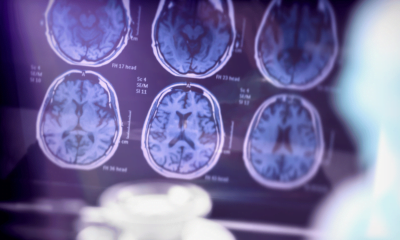Drugs targeting the endocannabinoid system hold promise as a novel painkiller, say researchers.
Researchers in the US are exploring treatments that could reduce pain amongst chemotherapy patients, without producing the psychoactive effects associated with THC.
The endocannabinoid system was discovered in the 1990s by researchers in Israel who were looking at the effects of cannabis on the brain. Named after the plant, the system is thought to act as a regulator, keeping the body’s internal functions in equilibrium.
The system consists primarily of endocannabinoids (cannabinoids produced by the body), receptors and enzymes. The two main receptors which endocannabinoids bind to are known as CB1 and CB2.
The stimulation of CB1 receptors is responsible for the medical effects of cannabis as well as its intoxicating effects caused by THC. Meanwhile, CB2 receptors are expressed on cells in the immune system meaning they can produce anti-inflammatory effects without the psychoactive effects associated with CB1 stimulation.

The therapeutic uses of cannabis are not a new discovery.
Ancient texts from China, Iran and India have been found to include information about the medicinal properties of the plant. In 19th century Europe, William O’Shaughnessy introduced cannabis to western countries, leading to the use of cannabis extracts for treating pain and seizure disorders.
Speaking at a New York Academy of Sciences webinar in January, Dr Aron Lichtman, of Virginia Commonwealth University said: “Everything that we think cannabinoids do for the treatment of pain and other disease states, much of this has already been thought through thousands of years ago.
“Much of the research today and what is thought to be its clinical uses, has really long been known from ancient research on botanicals.”
Lichtman believes there is a “great need” for the development of non-opioid medications to treat pain associated with various diseases and injuries.
According to the scientist, a potential solution could be drugs targeting the endocannabinoid system.
The endogenous cannabinoid system is known to moderate neuronal and immune cell function; two key factors associated with pain.
Chemotherapeutic agents such as Taxanes can have severe dose-limiting side effects, preventing an increase in the level of the treatment.
Sensory neuropathy is a common side effect that can in occur in half of patients. The condition, caused by the damage of the body’s sensory nerves, can be experienced for as long as three years after treatment particularly affecting the hands, fingers, feet and toes.
The condition, known as chemo-induced peripheral neuropathy (CIPN), is resistant to traditional analgesics making treatment difficult.
There have been a number of preclinical studies looking at potential CIPN treatments which have found that CB1 and CB2 agonists can be effective in treating the condition in rodent models.
Much of the current research involves flooding the endocannabinoid system with THC, stimulating the receptors in an effort to reduce pain. Although initial findings have been positive, Lichtman’s research takes a different approach.
He and his team focused on the endocannabinoid regulating enzymes, or inhibitors, which he says also show analgesic effects in rodent models. Specifically, Lichtman’s research looks at the enzyme, monoacylglycerol lipase (MAG lipase) which is expressed widely thoughout the nervous system.
Its inhibition leads to elevated levels of 2-Arachidonoylglycerol (2-AG), an endocannabinoid that binds to the CB1 receptor. According to a number of animal models, this produces both antinociceptive effects (blocking the detection of pain) and anti-inflammatory effects.
“[This] means that when you inhibit MAG lipase, you’re going to get some stimulation of CB1 and CB2 receptors. This is quite different from what we heard previously about THC where you stimulate receptors everywhere,” Lichtman said.
“In the case of these endocannabinoid regulating enzymes, it’s a lot more localised. These endocannabinoids are believed to be produced and released on demand. So when you block an enzyme such as MAG lipase and raise 2-AG levels, you don’t get the widespread psychotropic effects that you see with cannabis or THC.”
Lichtman’s research involved giving mice an injection of the chemotherapy agent, Pacitaxel. Hypersensitive to heat, the mice were exposed to a filament to create a scenario similar to patients who are treated with chemo agents.
The mice who had been administered Paclitaxel experienced pain, whereas the others did not. When the mice were given a drug that inhibited MAG lipase, the mice appeared to experience less pain.
The research found that repeated administration of the drug led to full tolerance, however, if used at low doses, Lichtman believes MAG lipase inhibitors could be a “promising strategy” to treat CIPN.
Despite these promising results, he stressed that more work is needed to clarify the research findings.
“Preclinical studies are used or completed to show that cannabinoids can be a good treatment for many different indications,” he added.
“We have to be very careful about that and interpret preclinical data appropriately with limitations and acknowledge the importance of clinical trials.”

 News6 months ago
News6 months ago
 News6 months ago
News6 months ago
 News6 months ago
News6 months ago
 Science5 months ago
Science5 months ago
 Industry5 months ago
Industry5 months ago
 News6 months ago
News6 months ago
 Medical cannabis6 months ago
Medical cannabis6 months ago
 News5 months ago
News5 months ago













